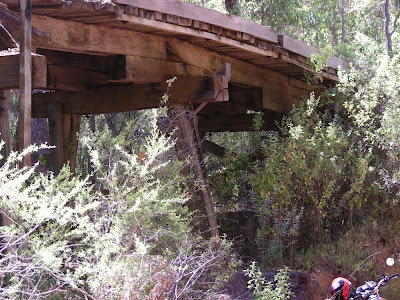After connecting the water pump and arranging for the drainage to go into a bucket from which the pump temporarily drew its' supply I opened all the taps so that if there were going to be any leaks they would be relatively small. While the taps are "on" there is not a lot of pressure in the pipes as all the water goes straight through. I could then go around and check each fitting for leaks without any flooding occurring at full flow. Not a single leak! Mind you the fittings are designed to withstand full mains pressure and all these caravan systems operate at about 25% of that. After the first check I could then gradually close each tap to let the pressure build up gently. As there is only the shower, kitchen sink and bathroom hand basin it's not too hard. Still no leaks! I love those Hepworth fittings!
Of course "sods law" has to get involved however . . .
Most of the 12Vdc water pumps are capable of delivering about 12litres per minute (lpm). Quite a few comments are made about how weak a flow this is. While looking to order my pump (on the net) I noticed that pumps of about 25lpm cost very little more. Why not have a more powerful pump and better flow? The answer to that question became very obvious very quickly. While the mains can force more water through because of the pressure these pumps are what are called "demand flow". ie They pump until the pressure builds up to a set point, about 25% mains, and then they switch off! When the tap is turned on the pressure drops and the pump begins pumping again until the tap is turned off etc. etc. Well it appears that my BIG pump can build up enough pressure to turn itself off even while the tap is turned on to its' maximum in about 1 sec. flat!! So it turns itself off - for about the 1 sec. it takes for the pressure to drop again - so it turns itself on again - etc. etc. etc.
As showers and many taps are now limited to about 9lpm it would appear that a pump of 10-12 lpm is ideal when only one tap at a time is turned - the norm for motor homes I would imagine.
I think I m going to have to experiment with an air chamber in the line to try and prevent the pump from switching itself to death in a very short time.
Never the less the shower, hand basin, sink and toilet have all now been "christened" and with the addition of a proper shower curtain proved necessary the plumbing is usable. If I drank a glass of champagne would be in order!
Time for a little clean up so some upholstery can be decided on for seating cushions.

It seems about time to start finishing a few things off so a door frame and door to the bathroom would be a nice touch. A length of beech timber is machined to be a nice fit around the edge of the door opening on each side.

These are notched out at the top

for a cross piece to be fitted and we have what starts to look like a door frame. This will be pulled out and coated with clear lacquer before being finally reassembled and stops fitted for the door to close against.

So now we know the final size of the opening a door can be framed up and then covered with some 3mm thick MDF

before being put in the "press", which consists of being underneath a big stack of sheets of plywood. Crude but effective. When dry it will be pulled out trimmed to size and lacquered white to match he rest of the cupboard doors.

A friend of mine has been telling me about a new 4x4 track which has been opened to the public near Dwellingup about an hour south of Perth. It follows along a creek with a few nice camping spots I have been told and shouldn't be any problem with clearance for my truck. In this map the green track is gravel while the purple and yellow are bitumen.

So I decided to take a day off and take my motorbike down and check out what it would be like for an exploratory trip. The entry to the gravel portion looked very promising . . .

But about 10km in it turned out like

with lots of overhanging branches and even deeper cuts between high walls. The ruts etc. would not be a problem by themselves but they were very sloped to one side with high walls which would make it too much of a risk of serious damage if the truck were to slip off to one side.
I am going to have to take my friend for a drive so he can see just how big a 12 tonne truck really is!
But having started and it seemed a nice day for a ride I decided to do the whole 100km just for enjoyment. One of the main features were a couple of old trestle bridges now seriously falling apart.


Some of them are quite safe for pedestrians

but vehicular traffic and going near the edge are actively discouraged!

And seeing I managed to fall off and have my bike land on top of me only once I consider the day was well worth it!










































